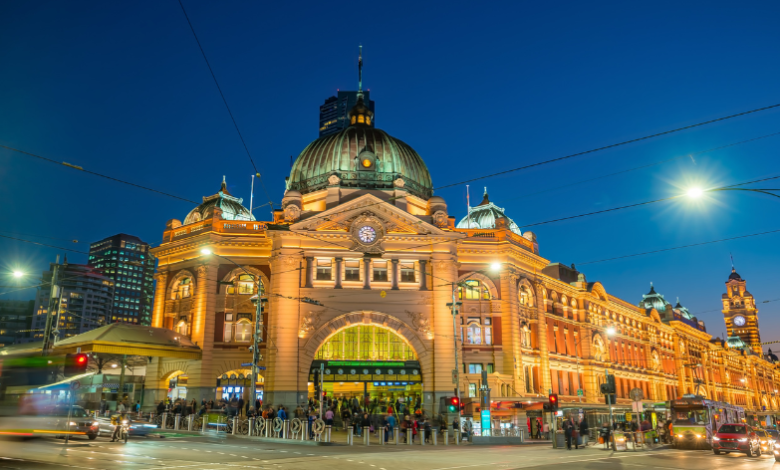Transfield historical milestones. melbourne city link

Step back in time and immerse yourself in the rich tapestry of Australia’s infrastructure evolution with Transfield Historical Milestones. Join us on a journey through the annals of Melbourne’s bustling cityscape as we unravel the captivating tale of the Melbourne City Link project. Discover how this iconic venture has reshaped transportation dynamics, leaving an indelible mark on modern urban landscapes. Fasten your seatbelts as we delve into a narrative brimming with innovation, collaboration, and sheer engineering marvels!
Overview of Melbourne City Link Project
The Melbourne City Link Project, a bold infrastructure initiative that transformed the transportation landscape in Victoria, Australia. Connecting major roads and creating new tunnels and bridges, this project aimed to alleviate traffic congestion and improve connectivity across the city. With its ambitious scope and innovative design, the Melbourne City Link quickly became a symbol of progress and modernization.
By integrating various modes of transport seamlessly, such as roadways, freeways, and public transportation systems like buses and trains, the project revolutionized how people moved around Melbourne. The construction involved intricate planning to minimize disruptions while maximizing efficiency – a feat that required meticulous coordination among engineers, contractors, and government stakeholders.
Upon completion, the Melbourne City Link not only enhanced commuter experience but also laid the groundwork for future urban development in the region. This landmark project stands as a testament to strategic urban planning and collaborative efforts towards building sustainable cities for generations to come.
History and Background of the Project
The Melbourne City Link project, a pivotal transportation initiative in Australia, has a rich history and background that laid the foundation for modern infrastructure development. Originating in the early 1990s, this ambitious project aimed to alleviate traffic congestion and enhance connectivity within Melbourne’s bustling urban landscape.
With Transfield Services leading the charge, construction of the City Link involved innovative engineering solutions and collaboration with various stakeholders. The creation of tunnels, bridges, and roadways transformed the city’s transport network significantly.
The project faced challenges such as environmental concerns and community disruptions during construction. However, through strategic planning and proactive communication, these issues were effectively addressed to ensure minimal impact on residents and surrounding areas.
Understanding the history and background of the Melbourne City Link project provides valuable insights into how ambitious infrastructure projects can shape a city’s future growth and prosperity.
Key Players and Partners Involved in the Project
The Melbourne City Link project brought together a diverse group of key players and partners to make the ambitious vision a reality. Transfield Services, now known as Broadspectrum, played a crucial role in managing the construction and maintenance aspects of the project. Their expertise in infrastructure development was instrumental in ensuring the success of the Melbourne City Link.
Additionally, international companies such as Obayashi Corporation and Kumagai Gumi provided valuable insights and resources for the construction process. Local stakeholders like VicRoads and Public Transport Victoria collaborated closely with these global partners to ensure seamless integration of transportation systems within Melbourne.
The involvement of government bodies at both state and federal levels further underscored the collaborative effort that went into making the Melbourne City Link a transformative infrastructure project for Australia. The shared commitment to innovation and excellence among all stakeholders paved the way for creating a modern transportation network that continues to benefit Melburnians today.
Impact of Melbourne City Link on Transportation and Infrastructure
The Melbourne City Link project has significantly transformed the transportation and infrastructure landscape of the city. By connecting major roads, tunnels, and bridges, it has enhanced accessibility and reduced travel times for commuters. The improved connectivity between key areas of Melbourne has not only eased traffic congestion but also boosted economic activities in the region.
With its state-of-the-art design and engineering marvels, the City Link project has set a new standard in urban infrastructure development. The seamless integration of road networks and public transport systems has provided a more efficient mode of transportation for residents and visitors alike.
Moreover, the project’s focus on sustainability through green initiatives like landscaping and noise reduction measures showcases a commitment to environmental stewardship. This holistic approach ensures that the impact on both transportation efficiency and ecological balance is carefully considered.
The Melbourne City Link project serves as a testament to how innovative infrastructure projects can revolutionize urban living while preserving natural ecosystems.
Challenges Faced During Construction and Solutions Implemented
The construction of the Melbourne City Link project posed several challenges along the way. One major obstacle was navigating through existing infrastructure and busy urban areas without causing disruptions to daily life. This required meticulous planning and coordination to minimize inconveniences for residents and commuters.
Additionally, environmental considerations had to be taken into account during construction to ensure minimal impact on local ecosystems. Mitigation measures were implemented to protect wildlife habitats and preserve green spaces surrounding the project site.
Another challenge was managing the scale of such a massive undertaking, involving multiple stakeholders with varying interests and priorities. Effective communication among all parties was crucial in addressing concerns promptly and finding mutually beneficial solutions.
To overcome these hurdles, innovative engineering techniques were employed, such as prefabrication off-site to reduce on-site construction time and traffic congestion. Continuous monitoring and adjustments were made throughout the project lifecycle to stay on track despite unforeseen obstacles that arose.
Legacy and Achievements of the Melbourne City Link Project
The Melbourne City Link Project stands tall as a testament to innovation and progress in Australia’s infrastructure development. Its legacy and achievements are woven into the fabric of Melbourne, shaping the city’s connectivity and accessibility for generations to come.
One of its key accomplishments is the seamless integration of multiple modes of transportation, enhancing mobility and reducing travel times for commuters. The project’s innovative design not only alleviated traffic congestion but also enhanced the overall urban landscape, creating new opportunities for economic growth and development along its corridors.
Moreover, the Melbourne City Link has set a high standard for future infrastructure projects in terms of sustainability and efficiency. By prioritizing environmental considerations and employing cutting-edge technology, it has become a model for sustainable urban planning practices across the country.
Conclusion: The Significance of Transfield Historical Milestones in Shaping Modern Australia
The Transfield Historical Milestones, such as the Melbourne City Link Project, have played a pivotal role in shaping modern Australia. These projects not only showcase engineering excellence but also demonstrate how innovative thinking can transform infrastructure and transportation systems for the better.
Through partnerships with key players like Transurban and government entities, the Melbourne City Link Project has significantly improved traffic flow, reduced congestion, and enhanced connectivity within Melbourne. The legacy of this project lives on through its lasting impact on urban development and economic growth.
As we look back at the achievements of the Melbourne City Link Project and other Transfield Historical Milestones, we are reminded of the importance of pushing boundaries, embracing innovation, and working collaboratively to create a more sustainable future for generations to come.



